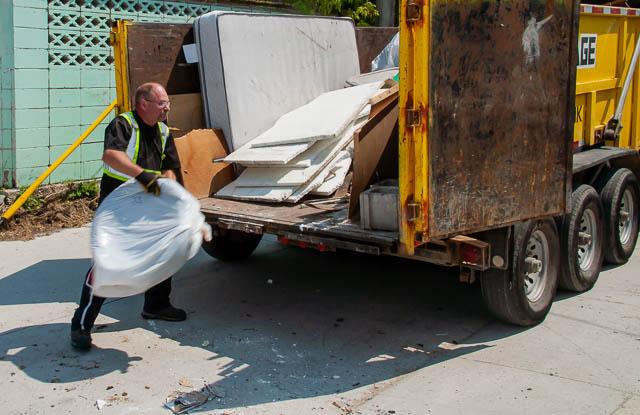Whether you’re remodeling your kitchen, renovating your basement, or converting commercial space, interior demolition is the first major step. But it’s not just about swinging a sledgehammer—safe and efficient interior demolition requires planning, precision, and a thorough understanding of your space. For homeowners and contractors in Winnipeg, understanding local guidelines and best practices can save time, money, and potential hazards.
In this blog, we’ll walk you through the key steps of interior demolition in Winnipeg, safety tips to avoid costly mistakes, and how professional services can simplify the process.
What Is Interior Demolition?
Interior demolition refers to the removal of non-structural elements inside a building. This can include:
- Walls (non-load-bearing)
- Ceilings
- Flooring
- Drywall and insulation
- Built-in cabinets or shelves
- HVAC, plumbing, and electrical components (non-critical)
Unlike total demolition, interior demolition preserves the building’s structural frame while clearing the way for new construction.
Why Winnipeg Residents Should Understand Interior Demolition
If you’re planning any kind of renovation in Winnipeg, it’s essential to know local rules regarding permits, waste disposal, and safety regulations. The City of Winnipeg requires permits for most major interior demolition projects, especially when removing plumbing or electrical systems.
Working with a local professional helps ensure:
- Compliance with city codes
- Safe disposal of materials
- Proper assessment of hazardous materials (e.g., asbestos or lead paint)
Step-by-Step Interior Demolition Process
1. Assess and Plan the Demolition
Before touching anything, walk through the space and identify what needs to be removed. This includes:
- Materials to be demolished
- Existing utilities
- Load-bearing structures to avoid
- Hazardous materials
Pro Tip: Hire a professional to inspect the space, especially in older Winnipeg homes that may contain asbestos or lead-based paint.
2. Obtain Required Permits
In Winnipeg, you’ll likely need permits for any demolition that affects plumbing, electrical, or HVAC systems. Contact the City of Winnipeg Planning, Property & Development Department to confirm what’s required.
3. Shut Off Utilities
Safety first. Ensure all electricity, gas, and water lines to the affected area are shut off or disconnected by licensed professionals. This minimizes the risk of electrocution, gas leaks, or water damage during demolition.
4. Protect the Surrounding Area
Use plastic sheets or zip walls to seal off the work area. This will help contain dust and debris, especially if you’re living or working in the building during the renovation.
Don’t forget to:
- Cover floors with protective materials
- Remove furniture and valuables
- Ventilate the area to reduce dust buildup
5. Remove Fixtures and Finishes
Start by removing all movable and attached elements:
- Light fixtures
- Cabinets and vanities
- Sinks, toilets, and other plumbing
- Doors and trim
These can often be reused or donated if removed carefully.
6. Demolish Non-Structural Elements
Carefully remove drywall, insulation, and non-load-bearing walls. Always double-check walls before demolition—never assume a wall isn’t load-bearing. Use the right tools, such as:
- Pry bars
- Reciprocating saws
- Hammers and mallets
Safety Tip: Wear PPE—gloves, goggles, mask, and steel-toe boots.
7. Sort and Remove Debris
As you go, sort materials into recyclable, reusable, and waste piles. Some Winnipeg facilities allow recycling of:
- Wood
- Metal
- Concrete and drywall
To simplify the process, consider renting a walk-in, easy-load garbage bin from a local provider.
Safety Tips for Interior Demolition
- Always test for asbestos and lead before disturbing old materials.
- Don’t work alone—always have someone available for help or emergencies.
- Use proper tools and wear full PPE.
- Dispose of hazardous waste according to Manitoba environmental regulations.
- Keep fire extinguishers nearby when working with old electrical systems.
When to Hire a Professional Demolition Service in Winnipeg
While small DIY projects are possible, most interior demolitions benefit from the expertise of professionals, especially in complex or large-scale jobs.
A professional interior demolition company in Winnipeg can help with:
- Permit handling
- Safe asbestos/lead removal
- Fast and clean demolition
- Responsible waste disposal
Eco-Friendly Demolition Practices
Demolition doesn’t have to be wasteful. In Winnipeg, green demolition is becoming more popular. This includes:
- Salvaging materials like wood, fixtures, and metal
- Recycling concrete and drywall
- Donating usable items to local non-profits
Your contractor should guide you on sustainable demolition options.
Final Thoughts
Interior demolition is a foundational step in any renovation project, and doing it right sets the tone for everything that follows. From ensuring permits to properly disposing of waste, each step plays a role in a successful transformation.
If you’re planning a project in Winnipeg, trust a local expert to handle the demolition with care, safety, and efficiency.
Frequently Asked Questions (FAQs)
1. What is interior demolition?
Interior demolition involves removing non-structural elements like walls, floors, and fixtures within a building while keeping the main structure intact.
2. Do I need a permit for interior demolition in Winnipeg?
Yes, permits are often required, especially if plumbing, electrical, or HVAC systems are involved. Always check with the City of Winnipeg.
3. How much does interior demolition cost in Winnipeg?
Costs vary depending on the size and complexity of the project, typically ranging from $2 to $10 per square foot.
4. Is it safe to do interior demolition myself?
DIY demolition is possible but can be risky without experience, especially if asbestos or electrical systems are involved.
5. What safety equipment is needed for interior demolition?
Basic PPE includes gloves, safety goggles, dust masks, steel-toe boots, and hearing protection.
6. How do I know if a wall is load-bearing?
You should consult a contractor or structural engineer. Removing load-bearing walls without proper support is dangerous.
7. How is debris removed after demolition?
Debris is usually sorted, recycled, or placed in a rented garbage bin for safe disposal.
8. Can materials be reused after interior demolition?
Yes, items like wood, cabinets, and fixtures can often be salvaged or donated.
9. How long does an interior demolition project take?
A basic project can take 1–5 days, depending on the area and complexity.
10. Why hire a professional interior demolition service in Winnipeg?
Professionals ensure safety, handle permits, provide proper equipment, and dispose of waste legally and responsibly.
Need Interior Demolition in Winnipeg?
At Mr. Garbage, we offer professional, insured, and efficient interior demolition services across Winnipeg. Whether you’re gutting a bathroom or preparing for a full remodel, we bring the tools, bins, and experience to get the job done right. We also provide:
- Same-day garbage bin rentals
- Eco-friendly disposal
- Transparent pricing with no hidden fees
- Trained and licensed crew
Call us today or book your service online to get started!

